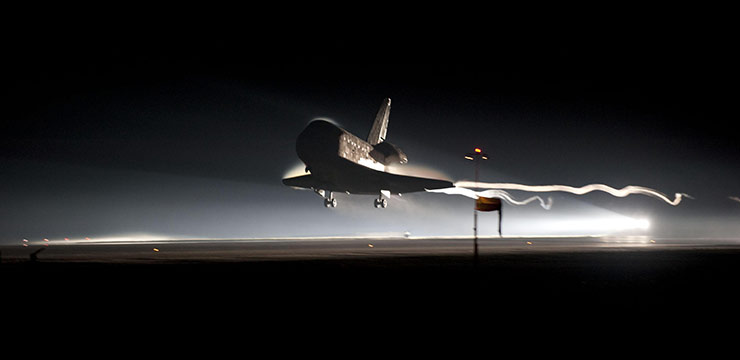
The Space Shuttle: One Decade After
July 2021 :
This July marks ten years since the last flight of one of the hardiest members of the NASA fleet: The Space Shuttle. Some of us old-timers might actually recall a young Steve Hubbard standing in front of the group, letting us know about the “New” craft that NASA was getting ready to introduce in the early 1980s, an actual, reusable one that could be launched like a rocket, expend its giant fuel tank and accompanying rockets, and fly home, landing just like a regular airplane.
There were several constructed, with the first actual launch, the shuttle Columbia, occurring April 12, 1981. Unlike future trips, only two persons traveled upwards: John W. Young, commander, and Robert L. Crippen, pilot. The flight lasted just over 54.5 hours, and was the first American-crewed space flight since Apollo-Soyuz in 1975. By coincidence, the date was the 20th anniversary of Yuri Gagarin’s first human spaceflight in 1961.
Since then, the Space Shuttle has been an invaluable piece of work: Sending crew members, many not from test pilot school as previously required, as most had originated from, but scientists, engineers, and others. It was instrumental in participation of Mir experiments, and the construction of and the International Space Station; it conducted many scientific experiments, and launched many satellites, not to mention the Hubble Space Telescope, after which it brought up five sets of mechanics to keep the telescope working for as long as possible.
The Shuttle program suffered two major losses, with the Challenger in 1986 and Columbia in 2003, but through it all, it had proven itself incredibly reliable. The last launch, STS-135 Atlantis, left Earth July 8th, 2011, returning July 21st. Until SpaceX was capable of sending crafts to the ISS, all necessary flights left from Russia, onboard the Soyuz spacecraft.
The end of the Space Shuttle was supposed to usher in the replacement Constellation program, with ambitious possibilities, including returning to the Moon in 2020, and a possible manned Mars flight several years later. But then, in 2010, then President Obama shelved the program. Was it a good idea? There doesn’t seem to be a real answer to that, especially as there is, at present, no actual future replacement within the NASA portfolio. However, with SpaceX, and other private space programs, the possibility of continuing a passenger and goods transport seems, at least at present, capable of travel off the planet.
At 5:57 a.m. EDT on July 21, 2011, space shuttle Atlantis landed for the final time at NASA's Kennedy Space Center after 200 orbits around Earth and a journey of 5,284,862 miles on the STS-135 mission and final flight for the Space Shuttle Program.
Photo credit: NASA/Kim Shiflett
July 21, 2011



